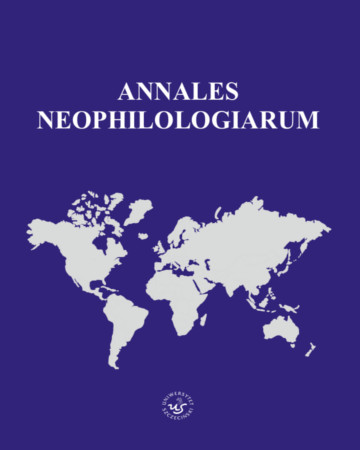




| Authors: |
Maria
Brenda
Uniwersytet Szczeciński, Wydział Filologiczny |
| Keywords: | cognitive linguistics semantics spatial prepositions English preposition at |
| Data publikacji całości: | 2015 |
| Page range: | 30 (26-55) |
| 1. | Biber D., Johansson S., Leech G., Conrad S. and Finegan E. (eds.), Longman grammar of spoken and written English, Harlow 1999. |
| 2. | Brenda M., The cognitive perspective on the polysemy of the English spatial preposition over, Newcastle upon Tyne 2014. |
| 3. | Brugman C., The story of over: Polysemy, semantics and the structure of the lexicon, New York 1988. |
| 4. | Coventry K.R., Garrod S.C., Saying, seeing, and acting: The psychological semantics of spatial prepositions, Hove 2004. |
| 5. | Cruse A.D., Aspects of the micro-structure of word meaning, in: Polysemy: Theoretical and computational approaches, Y. Ravin, C. Leacock (eds.), Oxford 2006 [2000]. |
| 6. | Cuyckens H., At – a typically English preposition, http://www.ifa.amu.edu.pl/psicl/PSiCL_19, date of access: 27 Feb. 2014, 1985. |
| 7. | Encyclopaedia Britannica, http://www.britannica.com/EBchecked/topic/263882/hertz, date of access: 27 Feb. 2014. |
| 8. | Evans V., From the spatial to the non-spatial: The ‘state’ lexical concepts of in, on and at, [in:] V. Evans, P. Chilton (eds.), Language, cognition and space. The state of the art and new directions, London 2010. |
| 9. | Herskovits A., Language and spatial cognition. An interdisciplinary study of the prepositions in English, Cambridge 1986 [2009]. |
| 10. | Kokorniak I., English at: An integrated semantic analysis, Frankfurt am Main 2007. |
| 11. | Lakoff G., Women, fire, and dangerous things: What categories reveal about the mind,Chicago 1987. |
| 12. | Langacker R.W., Foundations of cognitive grammar. Vol. 1: Theoretical prerequisites, Stanford, CA 1987. |
| 13. | Lindstromberg S., English prepositions explained, Amsterdam 2010. |
| 14. | Lundskær-Nielsen T., Prepositions in Old and Middle English, Gylling 1993. |
| 15. | Murray J.A., Bradley H., Craigie W.A., Onions C.T. (eds.), Oxford English Dictionary, Oxford 1989. |
| 16. | Talmy L., Toward a cognitive semantics. Vol. I. Concept structuring systems, Cambridge, MA 2000. |
| 17. | Talmy L., The fundamental system of spatial schemas in language, [in:] B. Hampe, J.E. Grady (eds.), From perception to meaning: Image schemas in cognitive linguistics, Berlin 2005. |
| 18. | Tyler A., Evans V., The semantics of English prepositions, Cambridge 2003. |